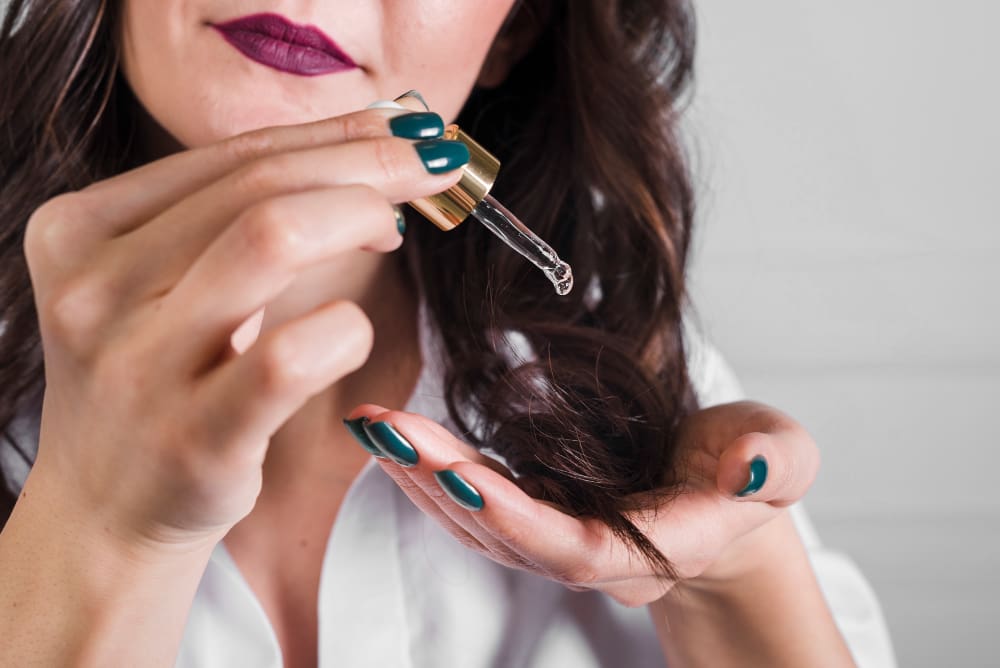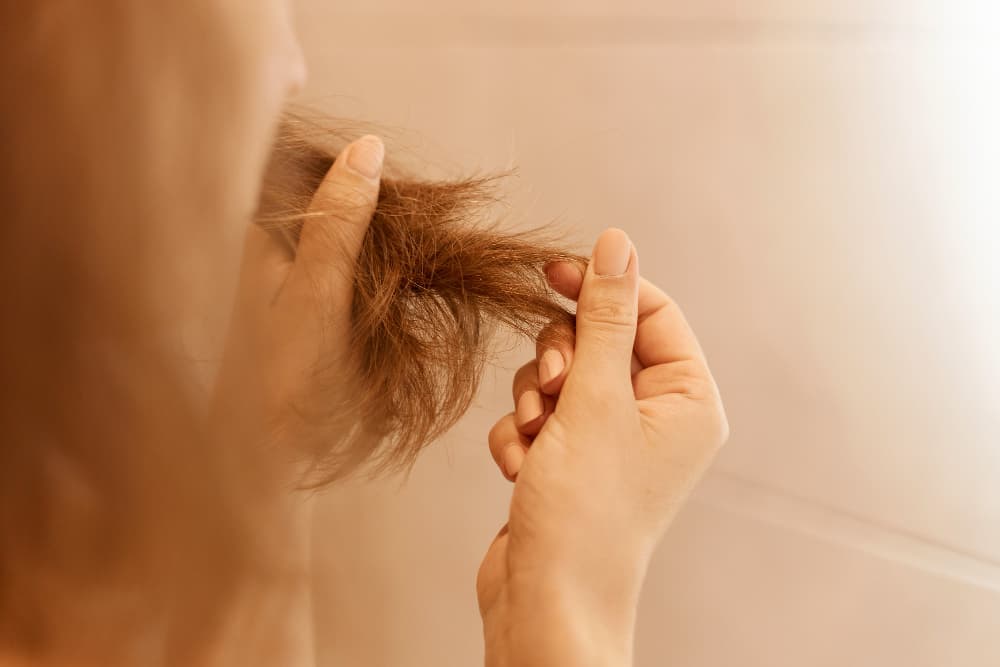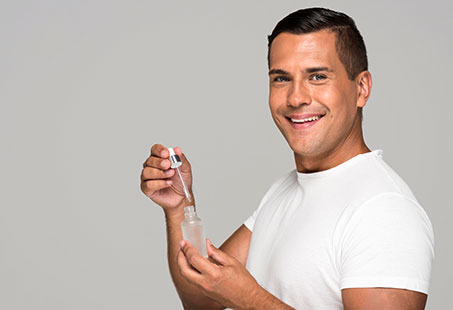There are a lot of bottled elixirs that claim to regrow your hair, but the question remains: Does hair regrowth serum work at all?
The internet is filled with pages that dive deep into this very question only to make product recommendations from which affiliate commissions “may” be earned. Needless to say, you have to take a lot of it with a very large pinch of salt.
According to companies, there’s nothing a serum can’t do – from making hair thicker, denser, stronger, and healthier to regrowing a full head of hair for someone who is bald.
The problem is that many hair regrowth serums fail to deliver. However, that doesn’t mean that all of them are bad and don’t work. Some actually do, but you need to look for the right things.
How Do Hair Regrowth Serums Work?
Depending on the kind of ingredients (including their quality and composition), a serum can work in one or more of the following ways to regrow your hair:
- Increase blood circulation: By promoting the circulation of blood to the scalp, it will flush the hair with more oxygen and nutrients, which it needs to grow.
- Inhibit DHT activity: DHT or dihydrotestosterone – a byproduct of testosterone that causes genetic hair loss – is prevented from being produced.
- Fight free radicals: Containing antioxidants, certain ingredients in serums can neutralise free radicals that are damaging the tissues.
- Reduce inflammation: Promotes healthy scalp skin by soothing any redness, irritation, and inflammation on the scalp.
- Hydrate: Support regrowth by stopping hair loss caused by dry, brittle hair that’s prone to breakage.
- Nourish with nutrients: Deposits nutrients on the hair, which can help it grow.
Keep in mind that not every serum can do all of the above. It depends on what’s really inside the serum.
Even then, the effectiveness of a particular ingredient depends on the type of hair loss you have.
How To Apply A Hair Serum
Before using any kind of hair serum, make sure to follow the directions given on the product’s package.
Some recommend using a few drops of the serum and massaging it onto the hair when it is clean and dry. Others, however, recommend applying it on damp hair for better results.
Don’t apply it on the roots; start from the ends and go all the way up to the middle of the hair shafts.

You can also section your hair and apply a few drops of the serum to the problem areas before massaging it in gently.
As far as the frequency of use is concerned, it may be once a day or a few times per week. You won’t be doing your hair any good if you excessively use a hair regrowth serum.
You should also note that you won’t get immediate results by using hair serums. It can be anywhere from 1 to 4 months before you see results (if any).
What Ingredients To Look For In A Hair Regrowth Serum?
Before that, you need to identify the root cause of your hair loss. And this isn’t something that you should do yourself.
It’s important that you consult a medical professional for an accurate diagnosis. Along with examining your scalp, they may also require blood tests and sometimes even a biopsy.
That’s because hair loss can occur due to a plethora of reasons. And a serum marketed as the “ultimate hair loss solution” won’t guarantee results if it doesn’t address the underlying cause.
Hair loss can occur due any one or more of the following reasons:
- Hormonal changes
- Weight fluctuations
- Ageing
- Family history
- Skin diseases
- Stress
- Illness (HIV, Syphilis. Lupus, etc.)
- Medications (antidepressants, statins, steroids, etc.)
- Therapies (chemo and radio)
- Tight hairstyles
The answer to does hair regrowth serum work can be yes if it contains the following ingredients (but again, it will depend on the type of hair loss you have):
- Biotin
- Minoxidil
- Peptides/amino acids/keratin
- Niacin
- Vitamins (B, C, D, E)
- Caffeine
- Plant extracts and herbs
- Coconut oil
- Argan oil
- Castor oil
- Jojoba oil
- Peppermint
- Salicylic acid
Make sure to look for these ingredients in your serum. And remember, the higher up the ingredient is on the list, the more percentage there is of it.
Does Hair Regrowth Serum Work?
Anecdotal evidence suggests that serums containing certain ingredients can treat the following types of alopecia:
- Hormonal hair loss (PCOS, postpartum hair loss)
- Telogen effluvium (nutritional deficiency, stress)
- Traction alopecia (especially in people of African descent)
- Dryness (from hair heating products, seasonal changes)
- Alopecia areata
However, hair regrowth serums usually work best for temporary hair loss. If, for instance, hair loss is caused by an underlying condition such as PCOS, a serum cannot treat hair loss caused by it. It can only play a supporting role.
For permanent hair loss like pattern baldness or androgenetic alopecia, the only ingredient in hair serums that is approved by the FDA is minoxidil. Unless the serum contains it, you’re unlikely to have regrowth for that kind of hair loss.
Even then, keep in mind that minoxidil doesn’t always work, and many people complain of scalp irritation and hypertrichosis (excessive hair growth) on their face from its usage.
According to some research, ingredients such as caffeine may also have the potential to block DHT. However, these conclusions are not definitive.
Until then, you cannot rely on hair serums to treat hair loss that’s permanent.
Additionally, you shouldn’t try treating your scalp with a serum if you have a skin condition like psoriasis or seborrheic dermatitis. That’s because patients are usually prescribed steroids for it.
Other than that, for hair loss due to autoimmune conditions like alopecia areata, lupus, graves’ disease, etc. it’s important that you consult a professional for hair loss solutions. A simple hair serum might not help you.
Can Hair Regrowth Serum Damage Your Hair?
Hair growth serums can also end up damaging your hair if you do not use them correctly.
For one, if you overapply it or use it too frequently, it can result in a build-up. Build-up can clog the hair follicles. And not only will it make your scalp flaky and itchy, but it can also lead to inflammation of the scalp and hair loss.
Certain ingredients in hair serums can also be too drying for the hair. And if you’re using them excessively, it will make your hair brittle and prone to breakage.

Other than that, using the hair serum a little too much won’t add any shine to your hair. Instead, it will end up looking limp and greasy.
How Else Can You Take Care of Your Hair?
Keep in mind that hair regrowth serums are the end all for hair loss. There are other more important factors that influence your hair regrowth. This includes your genetics, lifestyle, diet, and general hair care.
Although you can’t control all of these things, you can take care of a few. For that, consider doing the following:
- Scalp massages: Not only are they relaxing, but scalp massages can also stimulate blood flow to the scalp which can help your hair grow.
- Gentle hair care: For this, you should make sure to not tie your hair too tightly or excessively use styling tools because they can cause heat damage.
- Silk pillowcases: If you have dry hair, silk pillowcases can be especially good for your hair. That’s because they help keep the hair hydrated and tangle-free.
- Supplements: This only goes for those who have an actual nutritional deficiency, and for that make sure that you talk to a medical professional.
- Healthy lifestyle: This can include anything from exercising, getting adequate rest and not smoking to managing different stressors.
- Clean hair: It’s important to keep the skin of your scalp clean because that’ll allow for healthy hair growth to take place.
These measures can help you take care of your hair but if you’re losing your hair excessively, get in touch with a doctor immediately.
Conclusion
Does hair regrowth serum work? The answer is that it depends on the kind of hair loss you have and the kind of ingredients your serum contains. If one helps the other, you’ll notice regrowth.
However, if that doesn’t happen, you shouldn’t expect much or any change in the overall quality or density of your hair.
Just remember that there are many different types of hair loss. Using a serum (even if it’s the most expensive one out there) is not guaranteed to work if it’s not addressing the actual cause of the problem.
So, if you’re going bald or losing your hair excessively, get help from a medical professional.


